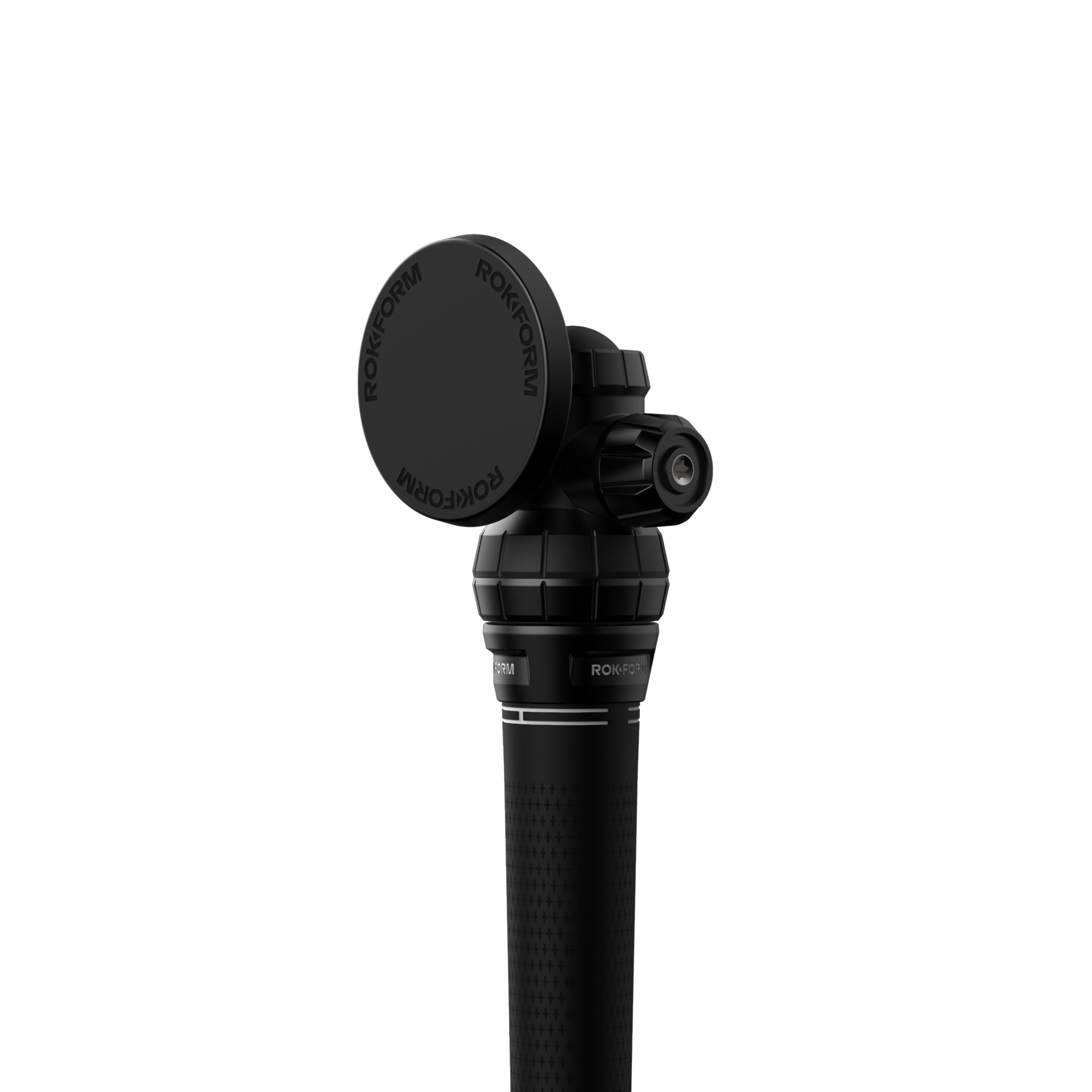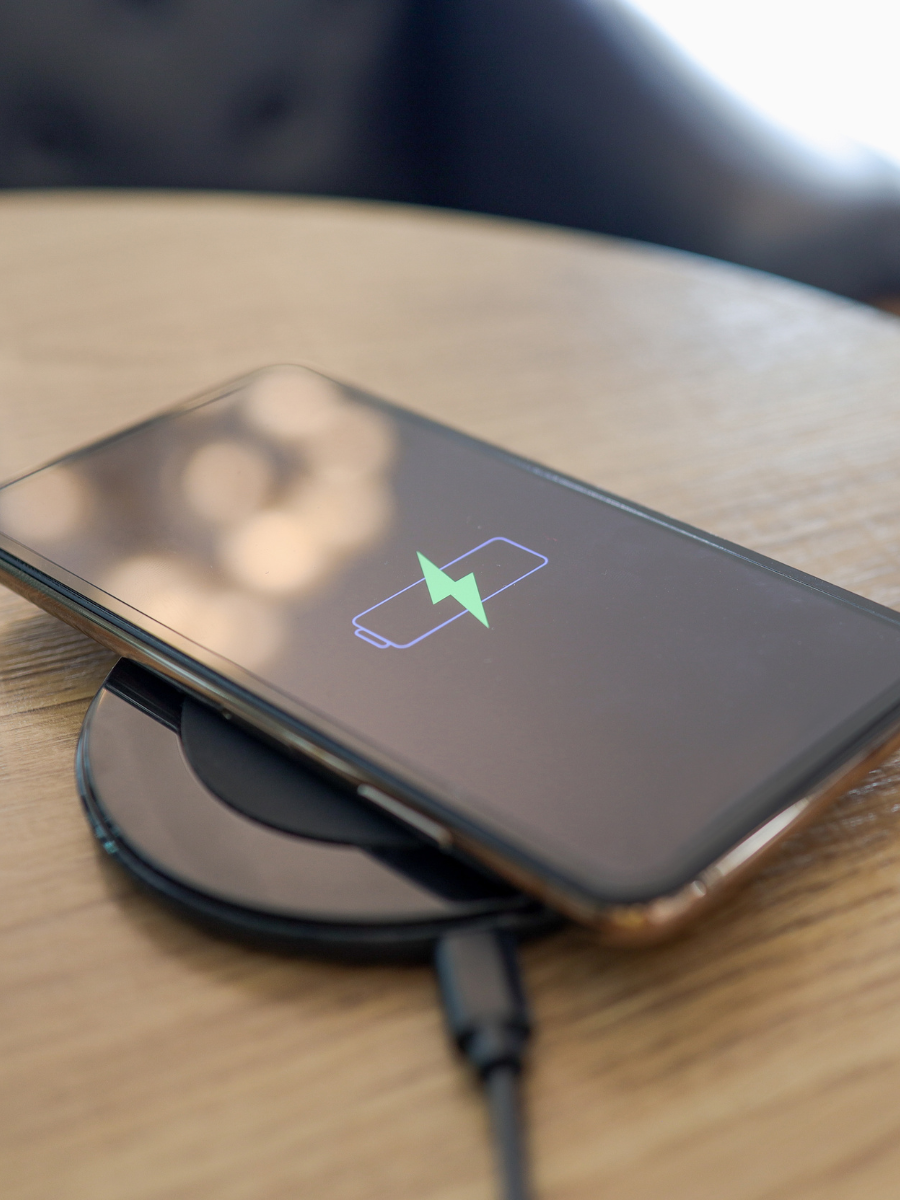Let’s be honest, there’s nothing worse than reaching for your phone only to find that you’re almost out of juice. Nowadays, we rely so much on our smartphones that charge is a vital element of a successful and easy day. As technology has increased and blessed us with phones that can do almost everything, so have chargers. In fact, there’s no need for cables; wireless chargers help you charge without the mess of tangled wires. The accessory trend continues to make our lives easier, with the best magnetic car phone mounts including our Rokform magnetic dash car charger.
According to a recent study, wireless chargers consume around 104% more energy than a regular wired charger when not accurately aligned. This poses the question: are wireless chargers bad for your phone?
In this guide, we’ll explore the answers and get to the bottom of whether or not a wireless charger is a good and safe investment.
TL;DR
Wireless chargers emit low-level electromagnetic fields (EMFs), but current research shows minimal risk to both health or phone function.
Wireless charging can produce more heat than wired options, but our expertly designed Rokform chargers incorporate features to manage this effectively.
Although generally less efficient, our advanced Rokform wireless charging technology is engineered to deliver fast, reliable power to your device.
Compatibility can be a concern with some setups, but our Rokform wireless chargers are built with broad compatibility in mind.
The magnetic fields in wireless charging might interact with metal objects or magnetic strips, but this rarely affects phone functionality (meaning it shouldn’t mess with your device).
Wireless charging offers amazing convenience, so you can charge it up, effortlessly. Plus, with our awesome Rokform ecosystem, everything fits perfectly into your lifestyle.
Electromagnetic Field Exposure
EMF-Induced Component Stress
Accelerated Chip Degradation
The notion of EMF causing thermal fluctuations and potentially affecting your phone's chips is a technical point. While minute thermal changes can occur during any charging process (wired or wireless), the idea that wireless charging significantly accelerates chip degradation due to EMF is not strongly supported. This is because modern chips are advanced, and the thermal management you’ll find with the best brands (like ours) further addresses any potential concerns.
Electromigration is a real phenomenon in electronics, but it's primarily driven by electric current and heat within the chip itself (meaning, not external EMF from wireless charging). While EMF induces small currents, the contribution to electromigration compared to the phone's internal operation is minimal. This is because advanced chip manufacturing processes are in place, designed to combat this effect.
Signal Interference
The suggestion that wireless charging EMFs significantly mess with cellular and Wi-Fi signals is a bit of an overstatement for most modern devices and chargers. The reason is because wireless charging EMFs can emit noise anywhere between 85–205 kHz, while far-field wireless power transfer often uses higher frequencies. While there's a frequency overlap in some cases, reputable wireless charger manufacturers, like us at Rokform, adhere to standards that reduce the chances of interference. We believe with well-engineered charging pads, you should experience noticeable connectivity issues.
Potential Biological Impacts
Many people wonder is wireless charging bad for health. And for that matter, it’s wise to acknowledge ongoing research into the biological effects of EMF. However, the good news is there is no conclusive evidence to suggest that EMF exposure from wireless charging negatively affects health.
However, if you're still concerned, you can rest easy knowing that our magnets will do no harm! We’re committed to safe magnet technology.
Sleep Disruption
One area where some users do notice a difference is in terms of sleep disruption. Charging your phone wirelessly next to your bed could lead to EMF exposure which could interrupt your sleeping pattern. However, the EMF levels from wireless charging are typically low. In fact, studies have shown that blue light exposure is more troubling for sleep than EMF.
The table below gives some fascinating insights.
Distance from Wireless Charger |
Relative EMF Exposure |
0-6 inches |
High |
6-12 inches |
Moderate |
1-3 feet |
Low |
3+ feet |
Negligible |
Heat Generation and Management

One reason why some may believe wireless charging is bad for battery life is because it generally creates more heat than wired charging. Typical wireless charging efficiency ranges from 60% to 80%, with the remaining energy often dissipating as heat. Studies have indicated that wireless charging can lead to a temperature increase ( up to 8°C ), in the phone's battery.
However, here at Rokform, we get the importance of managing heat to protect your phone’s battery health. That’s why we’ve made our Wireless Dash Car Charger with careful consideration for thermal management. Our Dash Car Charger gives you the convenience of on-the-go charging for your MagSafe-compatible devices and secure mounting, thanks to our powerful magnets.
Battery Stress from Heat Exposure
What does all this mean? In some cases, wireless charging could be bad for battery life because regular exposure to high temperatures during charging can shorten battery life and performance. However, the concern about heat exposure impacting battery lifespan is valid for any charging method, not just wireless. Lithium-ion batteries perform best at temps ranging from 20°C to 25°C. That said, prolonged exposure at higher temperatures can speed up battery degradation over time. It’s even suggested that for every 10°C increase above 30°C, the battery's lifespan could potentially be halved.
The video gives some interesting insights into how wireless charging works and how it affects battery life.
Reduced Charge Cycles
Does wireless charging reduce battery life? If we’re talking about reducing the number of charging cycles your phone handles, it’s entirely possible. That means you’ll end up changing your battery far sooner than you otherwise would if you charge wirelessly over the long-term.
A regular lithium-ion battery can handle between 300-500 full charging cycles but heat exposure can reduce this to 150-250 cycles, albeit in the most extreme of cases.
We can also talk about a decrease in the maximum capacity of your battery, meaning you'll need to charge more often because it doesn’t last as long. Again, this is more likely if you’re using wireless charging very frequently when compared to wired charging. To counteract this, some of the latest phones now have features that limit charging to just 80% rather than 100% as this helps to preserve battery life over the long-term.
Charging Efficiency and Power Consumption
Energy Loss in Transmission
When power travels wirelessly to your phone, some energy is naturally lost in the transfer – it's the physics of the process. While wired charging boasts efficiency in the 85-95% range, standard Qi wireless charging typically operates between 60-70%. Misalignment between the phone and charger can indeed exacerbate this, potentially dropping efficiency, more so.
When charging a phone using a wireless charger, the energy transfer is less efficient than with a wired charger. This basically means that you use more electricity with a wireless version than a wired version. In addition to this, when the phone and charger are misaligned, e.g., not totally compatible, this can reduce efficiency by a further 20%.
The table below gives more information on charging methods and efficiency range versus energy loss.
Charging Method |
Efficiency Range |
Energy Loss |
Wired |
85-95% |
5-15% |
Wireless (Qi) |
60-70% |
30-40% |
MagSafe/Qi2 |
70-80% |
20-30% |
Misaligned Qi |
50-60% |
40-50% |
Increased Electricity Costs
Of course, the more electricity you use, the higher your electricity bills, and this can add up considerably over time. If you have a household with more than one person using wireless charging, your bills will be much higher.
For instance, a typical smartphone battery uses about 11.1Wh to reach a full charge, and when charged wirelessly at 70% efficiency, it would need 15.9Wh instead. Over one year, this could mean an extra 1.75kWh of electricity used.
Environmental Impact
It’s unsurprising that the more power you use, the more of an impact you have on the environment. It’s true that wireless charging is convenient, especially without the wires hanging down and potentially getting tangled, but it’s important to consider wider effects.
Charging Speed Limitations
Compatibility and Standardization Issues
Cross-Brand Compatibility Challenges
Voltage Mismatches
One of the main reasons why chargers may be incompatible is due to voltage mismatches. This can potentially damage your phone’s internal charging system. To help avoid this risk, it’s vital to use a charger that’s compatible with your phone’s model, even if it does cost more to purchase.
It’s interesting to note that voltage regulation in wireless chargers is a lot more complex than in wired versions. A phone’s over-voltage protection circuit can go some way to preventing damage but can, in some cases, result in no extremely slow charging or not charging at all.
Future-Proofing Concerns
Technology moves at a fast pace and wireless charging technology is no different. Many of the current systems may be unusable in a few years, especially in terms of compatibility with the latest phones of the future. There are many new advancements in terms of features, such as magnetic resonance charging and increased power levels.
This is where being committed to standards like MagSafe give a significant advantage. As you can see from our MagSafe Products page, we definitely embrace this technology. We aim to represent forward-thinking with this approach to wireless charging. By designing our products like the Magnetic Venta Car Charger, we aim to offer solutions that work flawlessly and are positioned to work with devices in the future.
Magnetic Field Interactions

Wireless chargers work with a magnetic field, and while very innovative and useful, they can have some surprising effects on your device’s internal parts and any objects nearby.
To give you some context, a wireless charger generally creates a magnetic field of around 1-2 µT (microtesla) at operating distances. In comparison, the Earth’s magnetic field is between 25 to 65 µT depending on location. At close range, wireless charging fields can be up to 10 times stronger than the Earth’s magnetic field at the same range.
Compass Calibration Issues
Navigation Inaccuracies
When your compass is miscalibrated, it can lead to errors when you’re using GPS-based navigation apps. In this case, your position on the map might be completely off, or the directions the app gives you could be quite unreliable.
Augmented Reality Glitches
Some AR apps that rely on orientation data could also end up malfunctioning due to inference. In this case, virtual objects could be misaligned or entire AR experiences could be unstable immediately after charging wirelessly.
Data Storage Concerns
External Hard Drive Risks
External drives kept close to wireless charging magnetic fields could fall foul of data loss. For that reason, it’s important to keep traditional style hard disk drives far away from your wireless charger.
Psychological and Behavioral Impacts
Wireless charging is certainly convenient and despite the risks and the whole ‘ are wireless chargers bad for your phone ’ debate, they certainly have their place. For instance, our Wireless Windshield Car Charger makes powering up your device as easy as breathing. You can bank on it being securely held with maximum suction, as it simultaneously powers up your device. It makes your driving experience even better, while you focus on the road ahead.
However, wireless chargers can also subtly change user behaviors over time. It’s important to consider these as they may affect your well-being and digital usage habits.
"Always-On" Mentality
Easier charging access may push you to use your phone more often, due to the ‘always-on’ mindset and the knowledge that your phone is fully charged and ready to use. This not only affects your battery but your general well-being too.
Sleep Hygiene Disruption
Earlier, we talked about how charging your phone wirelessly close to your bed can affect your sleep. However, having your phone close by increases the temptation to constantly check it. You might reach for your phone late at night or first thing in the morning. This not only increases your screen time but also disrupts your sleep due to the blue light issue we touched up on earlier.
In this case, it’s important to turn on your device’s night mode feature. This can help to reduce blue light emissions, but doesn’t cut the problem out completely.
Productivity Implications
Having your device constantly available and ready to use can also increase distractions and reduce your focus and productivity levels. In fact, did you know that it takes 23 minutes on average to focus after being distracted? Regular pinging notifications also have a drastic effect, reducing your productivity by around 40% when you’re focusing on complex tasks.
Charging Anxiety

Having a phone that’s regularly topped up because it’s so easy to charge can actually increase anxiety. It might sound like it should do the opposite, but it can cause people to look for new charging spots or feel awkward or worried when away from their usual charging setup.
In fact, ‘battery anxiety’ is now a recognized psychological phenomenon, and 90% of people report panicking when their phone battery hits 20% or below. All of this leads to an unsurprising rise in people seeking out charging availability in public spaces, which is growing annually.
Learnings Recap
Are Wireless Chargers Bad for Your Phone?
So, let’s look deeply at our core question - are wireless chargers bad for your phone?
Yes, wireless charging is super-convenient and allows you to power up your device without having to trip over a cable. But this also has some downsides, particularly in terms of performance and longevity. Wireless charging generates excess heat and when that isn’t managed properly, it can damage your device. Of course, we know that today’s phones are expensive, so we need them to last as long as possible.
Wireless charging is also less energy efficient than wired methods, and there are also compatibility issues to consider.
So, while wireless charging certainly ticks the convenience box, it may not completely tick the efficiency box. For that reason, weigh up the pros and cons and decide based on your usage patterns. At Rokform, we understand there is no ‘one-size-fits-all’ approach to technology. We’re all different, after all. That’s why we’ve designed a range of products to fit all needs.
For instance, the Rokform Magnetic Wireless Charging Stand is an ideal option if you want to prioritize convenience. On the other hand, if you’re a regular traveler, or you commute to work every day, the Rokform Magnetic Windshield Car Charger could be the ideal option for you.
Whether you choose to go wireless or stick with the wires, we’ve got your back. Head to our website and browse our accessories today; you never know, you might find your ideal option and find the answer to the wireless vs wired debate!







